All posts by Gary Stockton
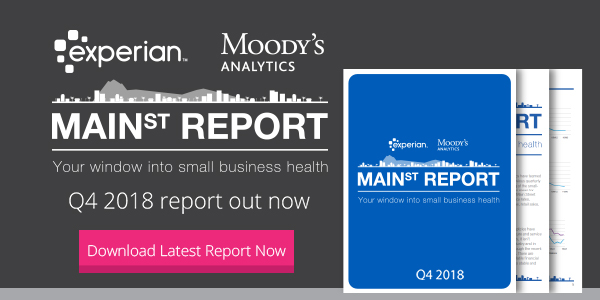
Experian has released the Experian/Moody's Analytics Main Street Report for Q4 2018. The report brings deep insight into the overall financial well-being of the small-business landscape, as well as providing commentary around what certain trends mean for credit grantors and the small-business community. Bucket 17Q4 18Q3 18Q4 Moderately Delinquent 31-90 1.68% 1.63% 1.68% Severely Delinquent 91+ 4.00% 3.40% 3.49% Bankruptcy BKC 0.16% 0.16% 0.16% The fourth quarter capped a second year of solid performance and growth for small-business credit, but there are signs that the period of moderation experienced during the past two years is over. Since the government shutdown has the potential to throw small-business lending a curve ball in the first half of 2019, the outlook for small-business credit is neutral. Conditions were positive in the fourth quarter, but this may not last long. Delinquency rates remained mostly stable, with pockets of weakness spread out among regions and industries, notably construction in the Plains. In addition to the 35-day shutdown, rising interest rates, destabilizing trade policy and slowing home-price growth are potential trouble sources that are already starting to impact some regions.
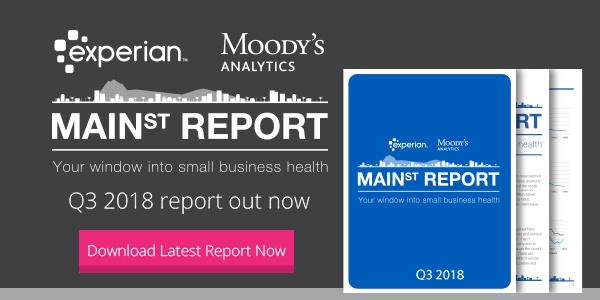
Today Experian and Moody's Analytics released the Q3 2018 Main Street Report. The report brings deep insight into the overall financial well-being of the small-business landscape, as well as providing commentary around what certain trends mean for credit grantors and the small-business community. For Q3 2018, the overall outlook for small-business credit is positive, but some industries such as construction have a negative outlook. Delinquency rates stable for now Delinquency rates are stable around their current levels, but this could change quickly if risks mount for certain industries. Continuing strength in the economy should keep small-business credit performance in check through the fourth quarter and early next year. Rising interest rates, destabilizing trade policy and slowing home-price growth are potential sources of trouble that are already starting to impact some regions. To bring insight to these Q3 business credit findings, Experian and Moody's Analytics will be presenting the Quarterly Business Credit Review for Q3 2018 on Tuesday, December 11th 10:00 a.m. (Pacific) 1:00 p.m. (Eastern). Read the report and bring your questions, we will be opening up the session for live Q&A as we dig into the numbers and the outlook for Q4 2018. We hope to see you there. Presenters: Gavin Harding Derrek G. McCrank Cristian deRitis
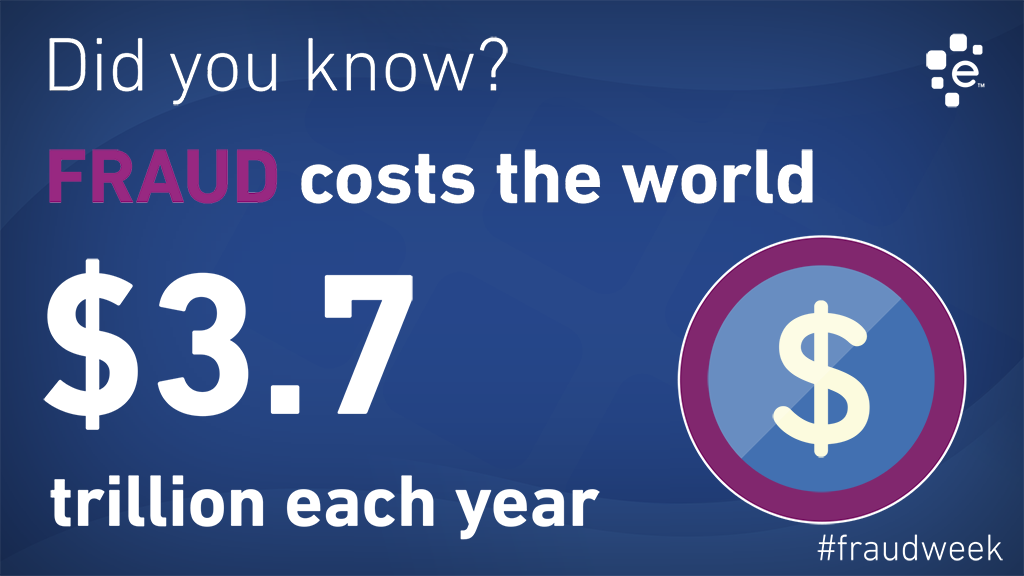
It's International Fraud Awareness Week and Experian would like you to know how big the problem is for businesses. Here are some sobering facts, did you know? Every year 3.7 trillion dollars is lost to fraud? it would take the average person to spend 130 million dollars per day in their lifespan to cover that amount. Fifty four percent of businesses are only "somewhat confident" in their ability to detect fraudulent activity. And that's compared to only 40 percent who are very confident. 52 percent of businesses have chosen to prioritize the user experience over detecting and mitigating fraud. Organizations worldwide lose an estimated 5 percent of their annual revenues to fraud, and an incident of fraud costs a company a median loss of $145,000. .
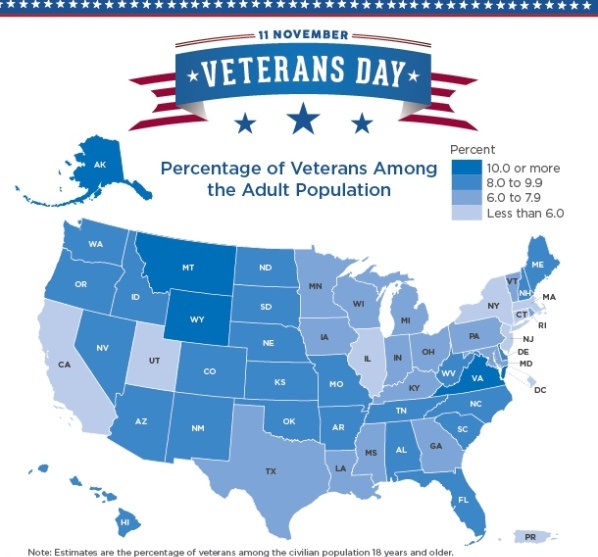
Today we are celebrating Veterans Day in the United States. With deep gratitude for their service and the many sacrifices made for our country, Experian salutes Veterans across the country, and around the world, and we extend our warmest wishes for a Happy Veterans Day. So, where are our Veterans? Well, according to the U.S. Census many of our Veterans are located in Montana, Wyoming, Virginia and Alaska. [Source: U.S. Census Bureau] Veterans Day originated as “Armistice Day” on Nov. 11, 1919, the first anniversary marking the end of World War I. Congress passed a resolution in 1926 for an annual observance, and Nov. 11 became a national holiday beginning in 1938. President Dwight D. Eisenhower signed legislation in 1954 to change the name to Veterans Day as a way to honor those who served in all American wars. The day honors military veterans with parades and speeches across the nation and a remembrance ceremony takes place at the Tomb of the Unknowns at Arlington National Cemetery in Arlington, Va. The ceremony honors and thanks all who served in the U.S. armed forces. Did You Know? 18.2 Million The number of military veterans in the United States in 2017. 1.6 Million The number of female veterans in the United States in 2017. 50.0% The percentage of veterans age 65 and older in 2017. At the other end of the age spectrum, 8.9 percent were younger than age 35. Veteran-owned Businesses in the U.S. In the US there are around two and a half million businesses that are majority-owned by veterans and growing. Veteran-owned firms have receipts in excess of a trillion plus dollars, and annual payroll of almost $200 billion. These are not insignificant figures as Veteran-owned small business owners drive to succeed in their business while supporting job growth. To perform well they need continued support and commercial credit can be an invaluable tool to an emerging business and its longevity and stability in the small business development. Veteran Strength Experian commercial credit data on Veteran-owned businesses highlights remarkable similarity between veteran owned businesses and the industry overall in terms of sales, commercial credit quality, indebtedness, and credit utilization. Stability Veteran-owned businesses typically employ more people, and show remarkable stability in terms of commercial risk and delinquency. Most Veteran-owned businesses are small and emerging. A positive trend in small business launches in recent years has resulted in a downward trend in the statistic below as more small businesses emerge in the 1-4 employee range and work to grow and survive in market. Avg. Owner Employee Size Infogram Infogram Veterans who own businesses in the US are an average of 4 years older than their civilian counterparts, and are 10% more likely to own homes. The strength of the housing market in the past few years has given small business owners the ability to source equity from their homes to strengthen their small business and to thrive. Veterans are applying the tools, learning, work ethic and dedication learned from their military service to build stable businesses that support employment and the small business ecosystem. We expect credit performance in the U.S. to remain strong in the short term but signals of approaching resets could change and impact the market in the short term. Veteran-led businesses will continue to charge forward and remain a vital part of our economy.
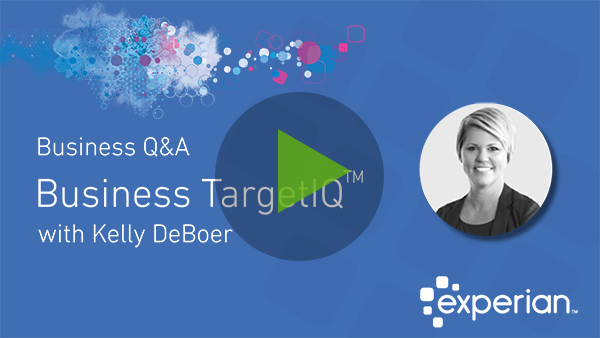
Experian Business Information Services recently introduced a powerful new marketing platform called Business TargetIQ. Product Manager, Kelly DeBoer answered a few questions about the product and described use cases that promote greater collaboration between credit and marketing departments. What does Business TargetIQ do? Business TargetIQ is our new marketing platform so it's a B2B marketing platform where clients can access data for marketing applications. How is it different from other business marketing platforms? It is unique in that it not only includes your standard or core firmagraphic information but also includes Experian's credit attributes. Does it have credit data? What does that mean to marketing or collaboration? Typically marketing data and credit data are housed in separate silos of information. With this tool the information will be combined together which will allow the tool not only to be used in traditional marketing applications for targeting but can also be in that risk factor which applies to different divisions within our client's applications or use cases of the data. Who would most benefit from Business TargetIQ? The thing about Business TargetIQ is it truly applies to all different verticals, as well as all different contacts within the company. So whether it's a financial vertical or a trade vertical, retail, just across the board all clients can utilize this. Anybody that's doing marketing can utilize this platform. What core problems does Business TargetIQ solve? It solves a lot of different problems, so, the most common client issues that are brought to our attention are gaps in data, as well as in the marketing initiatives. So they may have data in-house but they have holes within the data. Our tool will allow them to not only upload their client records and fill in a lot of those gaps that they may have, whether it be contact information, or firmagraphics or address information. It will standardize that data and fill in those gaps. But will also provide the means to again use that data. Our business database which has over 16 million records. They can then utilize that information for prospecting, for data append, for analytics, for research applications, so it solves a lot of problems with regard to marketing and data concerns. How does credit data help with prospecting? So what we find is clients come to us and they may say you know I have an idea of what our clients look like, they're in this SIC or in this industry code, or they have this sales volume or employee size, but what they may not know is on the back end which really helps identify and target those businesses is the credit attributes, so the risk factors around those. So do they have delinquencies in their payments? Have they filed bankruptcies? Do they have UCC filings? So it allows them to take it that next step and not only really define what their clients look like, but identify clients that look like that. Learn More About Business TargetIQ

As a Senior Consultant with Experian Advisory Services, Gavin Harding works closely with many of Experian's FinTech and Financial Institution clients to find solutions to complex problems. We sat down recently to talk about bank partnerships, how they come about, what makes them successful, and how Experian supports them. Do you see a lot of collaboration between banks and FinTechs? The latest statistics show that 67 percent of banks and FinTech’s are either currently cooperating, or in discussions about cooperating, or exploring collaboration. So, yes a very significant proportion are considering collaborations. Why collaborate at all? You know it's interesting, they have different skill sets, different assets, different backgrounds. So for example; banks have really deep, broad customer relationships. You know think about your Mom or Dad bringing you to your local bank to open up your first account. Think about your student loan. Think about your mortgage. What kinds of relationships exist? So banks have really deep and broad relationships. But traditionally the experience with banks has not necessarily been great in terms of turnaround, in terms of the friction or pain involved in getting a loan or opening an account. On the other side, FinTech’s are really good at that customer experience. They describe it as either low or no friction. So very quick turnaround times. But they're very much transactional-focused, meaning single products. So FinTech has the technology and the experience, and banks have the depth of relationships with customers. You bring those two parts together and you've got a pretty amazing potential opportunity. There are as many relationship types shapes and sizes as there are people on the planet. Everything from cooperation on basic operations, meaning, a FinTech takes applications for a bank and then passes them on. All the way over to full-fledged integration of systems, personnel, capabilities, skill sets, and so on. So pretty much the broad spectrum. What works well? So it works really well when they are well-matched. So what I mean by that is, when the skill sets from one organization match the other. When one enhances the other, and it works really well when there are long and detailed discussions and preparations for the relationship. Meaning, they align and discuss goals, objectives, what each organization's role is, what each brings to the table, and very specifically how they are going to cooperate. What are the pitfalls? Well, the same pitfalls. So the pitfalls are that the relationship goals differ, or aren't aligned, or that one organization feels like they are bringing more to the relationship and that the partnership is equal, or when it feels as if each partner, each organization is not getting value from the relationship over time, and once again that reinforces the need for those detailed discussions before getting into that partnership or relationship. How does the process work? So it begins with a discussion. I've seen these partnerships start with a discussion over dinner at a conference. I've seen them start through a LinkedIn connection. I've seen them start over coffee. So it really starts with an exploration of who's out there? What organizations may be interested in even discussing some kind of collaboration? So it starts with the conversation at the very basic level, even when we see in the Wall Street Journal major strategic alliances between organizations, starts with people, and starts with that very simple conversation and connection. What are some key elements to be aware of? Well again it comes down to what each party brings to the relationship and what the goals are. So a good alignment of the capacity of skill sets, an alignment of investment in terms of time and resources, and very specifically a definition of who does what, what the accountabilities are, and what everybody's expectations are. They are fundamental to the success of any type of business arrangement or partnership. How does Experian support these partnerships? So the interesting thing is we have very deep relationships with both sides. So we bring data, solutions, consulting expertise to FinTech’s and to banks. So, it's really interesting we find ourselves in the middle of a lot of these conversations, and how we help is by understanding systems, technology, data, the best of both organizations involved in the conversations, and how to bring all of that together for a good focused efficient successful outcome. A couple of years ago this was new meaning that banks saw FinTech’s growing, and kind of looked at them a little bit maybe as competition, as potentially the enemy, FinTech’s saw themselves as disrupting the world and completely innovative and new. What's starting to happen is both sides are coming together, realizing that they are both part of the same financial industry, serving the same customers, maybe in different or new ways with different products. But in the same industry. So there is very much a coming together, an alignment a co-mingling, consolidation of all these various aspects of the industry. And I think it's really positive for consumers. More products, more quickly, and a better experience overall. Do you think a FinTech's ability to create more dynamic mobile experiences is a key element Certainly and so the big question we help banks answer in this space is, do we build it? Do we buy it? Do we partner? and build and buy or partner refers to the technology the infrastructure and the experience. So if you have a pretty big bank and they've got a old website, old process, lots of paper, lots of regulations, lots of pain in the process. Well they can look at one of the more advanced sophisticated mature FinTech’s and essentially use their platform, their engagement, their data, connect that to the bank's customers and in a very very short time transform that experience in a very positive way for their banking customers. Learn about FinTech Lending Solutions

We sat down with John Krickus, Senior Product Manager for Experian's Scoring solutions to ask about the new Social Media Insight, and how this data and score are being used to help businesses strengthen scoring models, and create opportunities for emerging small businesses with limited credit history but strong social media profiles. What is Social Media Insight? We're very excited to bring what we consider a breakthrough capability. Social Media Insight is an expansion, a use of new information beyond traditional credit data, that both improves the performance of our scores, provides attributes to our clients, and is directly sourced from the social media providers - no screen scraping. What type of social media data is used? So the social media data comes from sources that, like with our other data sources, we are not allowed to publicly disclose, but we are focused on business social media sites. So we're not going after consumer social media data, but social media data from business-oriented sites, so that we can better evaluate small and midsize businesses. What steps are taken to prevent artificially boosting the ratings of a business? So that's a question that we often receive about artificially boosting ratings. We work with social media companies, they have many techniques to identify where the reviews are coming from and to prevent someone gaming the system. Is it 100 percent full proof? No, but it is very effective. How effective has social media data been in predicting risk? As we've seen with using the data in our scoring solutions, we've seen a tremendous boost in score performance. There have been two real gains from using social media data. First is, we've developed about 70 social media attributes. We can now include those attributes and make these attributes available to our clients to improve the performance of risk scores. The second area really devolved from client feedback as we piloted the data. They indicated to us that there were social media data elements that are very helpful. So, we've been able to attain information such as pricing, parking situation, hours of operation, and those additional data elements have also helped our clients in improving their risk performance scores. What type of data do our clients get with Social Media Insight? We're able to provide our clients one of three types of data. First, we can provide a social media IntelliScore. That's our normal IntelliScore with commercial data, and now social media data. So, you get a higher performance. We've boosted performance by 37 percent with our IntelliScore. Second, we can provide those same social media attributes to our clients. So, they can incorporate those social media attributes into their scoring models. And third, we have the descriptive data. I mentioned hours of operation for example, social media data also provides a better description of the business. So, you just don't get an Exercise Gym, you get whether that gym is kickboxing or whether that's just exercise equipment. Can I target specific kinds of businesses? Can it be used for Marketing? We do have the ability to use social media data for identifying better businesses to do business with. Our initial focus though is in developing the attributes and the score for risk management. So that's really the focus for this first phase of Social Media Insight. How might Social Media Insight help an Insurance company? Insurance companies have been very anxious for this data, and they're getting a different view of the business. We're going beyond traditional trade, public record, background information, and now we're able to provide a view of how long has that business been rated? How are the ratings? What's the trend in the number of ratings? So, it's not just your level rating, but are you getting reviews over time? All that information provides a really unique view of the business that we've never seen before. How can Experian clients access Social Media Insight? Our clients can access the data one of two ways. We can provide a batch file. So, if you have a portfolio and you want to add social media attributes and a social media score to that you can provide us a file in batch. We also have our new API access, and we're very excited about that. So that allows you online real-time access to obtain the social media insight data, and it's very easy to program to. Can Social Media Insight help emerging businesses gain access to capital? Yeah that's an excellent area for Social Media Insight. It's really the newer smaller businesses that don't have a very deep credit history, that Social Media Insight now provides a view that previously it may have lacked information, therefore, credit may not have been extended. Now by having a social media site data available. We're adding depth of information to that business. We've actually found that businesses with social media data, as a group, are less risky than businesses without. How does Social Media Insight help improve risk model performance? So, the view that the social media data provides, we have found has boosted model performance, more than doubling model performance for those new emerging businesses. But even for established businesses we've seen double-digit gains in the measure of performance for models such as KS, and again you're getting a view of a business, number of reviews, and we normalized that. So, if you're in an area that's very active with social media data we take that into account. So, if you have 10 reviews in your history, which are in a very active area, you may not get as much of a positive as if you had 10 reviews and a less active social media area. So that combination really boosts performance and predictiveness of the data. How do Social Media Insight help our clients reduce risk? And really that's been one of the biggest breakthroughs with the social media data. Is by being able to boost the performance as I discussed earlier on KS, those new to the world businesses. They now are able to more confidently make decisions in their portfolio, because there is now a wealth of information. They're able to improve their models with this new additional information and have a very good performance improvement with it before and after. So, there's an across the board performance improvement. How does Social Media Insight help to automate the decisioning process? When you have an automated system, you want to have a higher level of confidence. The higher level of confidence you have, the stronger you can, for example, having automatic approve and automatic reject areas. By adding social media data we're able to get a stronger KS performance, which means you have more confidence in the models, and you can now increase the percentage your portfolios that you're putting through either automated or highly automated decision making. It's a significant boost in performance however you cut it. We're very excited about this unique new information source. Social media data is totally different from any other business credit information that's available, and when it's utilized in a model, in a decisioning system, the gain in performance are dramatic, and we're very excited to bring this capability to our clients. Learn about Social Media Insight
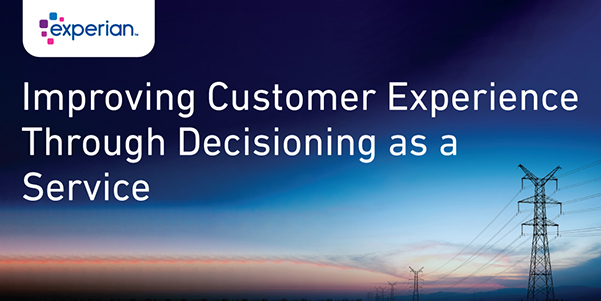
For utility companies, the customer onboarding process can sometimes be a complex, time-consuming, and unpleasant experience, especially if a manual credit decisioning process is in play. Every time a customer interacts with your utility company — be it via the website, telephone, in-person service call, mobile app, or social media — their experience sets the tone for the overarching relationship between the customer and your company. To improve the onboarding experience, many utilities are turning to machine learning to make faster and simpler credit decisions. However, creating a custom machine-learning decisioning engine is complex and can be costly. By leveraging machine-learning capabilities through Decisioning as a Service (DaaS) offerings, utilities can automate the decisioning process and create a frictionless customer experience. For example, a customer applying for service – even with a large utility — can be approved within seconds by an agent using a tablet. Using DaaS to Automate Your Credit Decisions DaaS can be used for many different types of decisioning — prescreening, prequalification, or instant credit. Utilities also use DaaS for authenticating and resolving identities and assisting with the rationalization of deposits. Other uses include improving the customer experience, credit line management, retention, cross-selling and collections optimization. The process is like using traditional decisioning methods where the customer or customer service agent enters the customer’s information into the website or system. The utility system then connects with the DaaS engine through an Application Programming Interface (API), The DaaS engine then aggregates real-time data from the credit bureaus and other data providers about the customer, runs them through business rules — and a decision is rendered. The decisioning engine uses rules and algorithms to create predictive models for credit, fraud and, bankruptcy risk, profitability, retention and other key areas. The DaaS engine then automatically determines the results, such as approval, decline, instant pre-screen, cross-sell, or a collection decision. More than just providing a result, the system helps your utility know exactly how to treat the customer based on their risk level. DaaS also helps utilities by customizing offers that deliver both business value and value to the specific customer. Additionally, the algorithms are continually updated so your decisions are always based on the current business climate, market drivers, and regulatory conditions. Creating a Seamless and Personalized Customer Experience From the customer’s perspective, the process is simple and seamless. Instead of waiting for hours — or possibly days — the customer receives an answer in real-time. If the decision is good news for the customer, they can move on with the process. And if the decision is not what the customer was hoping to hear, they can quickly move on and determine their next steps. There is no waiting, wondering, or anxiety. Using DaaS also creates a more personalized experience for the customer. DaaS recommends the next best step based on the customer’s specific situation, which is an informed way to begin your relationship and sets the right tone for the future. For example, DaaS may recommend no deposit based on risk-level, or a specific product or offer of value to the specific customer. Improving Operational Efficiency and Growing Revenue In addition to more loyal and satisfied customers, your utility company will see operational benefits and lower costs from using DaaS. Your employees no longer need to manually process credit applications and make decisions, thus eliminating paperwork, tasks, and time. Because DaaS provides centralized decision making, you can use the technology across different enterprise frameworks, call center environments, and processing systems. This dramatically increases your efficiency by eliminating manual processes which give your employees more time working to improve the customer experience. Because the process is more accurate than the traditional credit decisioning model, utilities can make better credit decisions. As a result, your utility can significantly reduce bad debt and fraud, which improves your overall financial health. At the same time, you can increase revenue by approving customers who are good credit risks but may have been denied using a manual or out-of-date decisioning model, and thus improve the customer experience. Additionally, your ability to more effectively cross-sell customers will help grow your revenue. Your utility’s success depends on its ability to make quick and accurate credit decisions while also providing a positive customer experience. By using an API to integrate DaaS into your systems, you can have confidence you are making accurate decisions while creating customer loyalty, improving revenue, and reducing costs. It’s simple, it’s easy and your customers will love it.
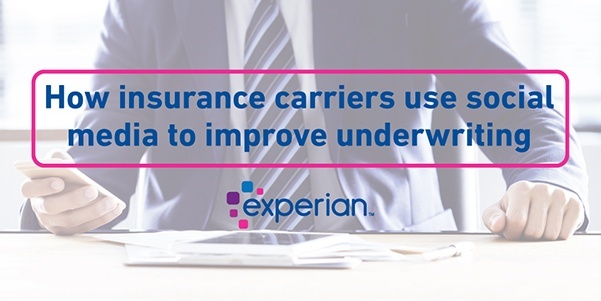
A gastropub restaurant applies for business insurance and is approved. However, social media insights show the restaurant is declining. Even though underwriters usually take a quick look at social media postings, evaluating the trends of the business is not part of the decision process. Costly mistakes: Underwriting using only business supplied information How could something as basic as a business in decline be overlooked in the insurance underwriting process? Think about the process when reviewing a new business insurance application. The underwriter reviews the application and looks at traditional credit and public filing information. Although the underwriter checks out the company website, he doesn’t meet or interact with the company. He then must make a potentially costly business decision about its risk level. Even though the process appears thorough, it does not use the new wealth of information available. How social media provides information about business health If the insurance company had used unique and new sources of social media data, the underwriter would have seen a different picture of the restaurant. The trends in the number of reviews point to a declining business due to poor service, bland food, or increased competition. Traditional data sources miss these subtle signs that point to a higher risk of going out of business. While one poor review shouldn’t result in a denial, a pattern of a declining business is important. This can be spotted using tools that analyze the trends in reviews and ratings for the business line. After all you cannot compare restaurants, with high volumes of social media postings, with say a dry cleaner. By correctly using social media data during the underwriting process, insurers can give an additional lift on the model to determine the risk. Social media data can also help determine more information about the business. For example, an exercise gym may have treadmills and weight machines, or it might actually be a kickboxing studio, which has a much higher level of risk and premiums. Underwriters also get a much more granular view than a typical application, such as the parking situation and the hours. Because risk is higher for businesses with a liquor license, insurers can often learn if a bar didn’t disclose this on their application. Customer photos also often tell a story not detectable on the application, such as broken stairs or a fireplace without proper screens. Using artificial intelligence to analyze social media data Looking through social media for each application takes large amounts of time. Even more importantly, humans may be subject to bias and miss word patterns in reviews. By using an artificial intelligence tool with machine learning capability to analyze social media data for business insurance applications, underwriters can gain a much more accurate picture of the risk they are assuming by insuring a business. Additionally, an AI tool can analyze business health much more quickly than an underwriter could doing the social media check manually. Insurance companies that use artificial intelligence tools to analyze social media data during the underwriting process can more accurately predict the risk of a business. Because the processing speed, adding this additional step does not slow the process down. By reviewing what other people are saying about the business, your insurance company can decrease risk and save money on claims.

